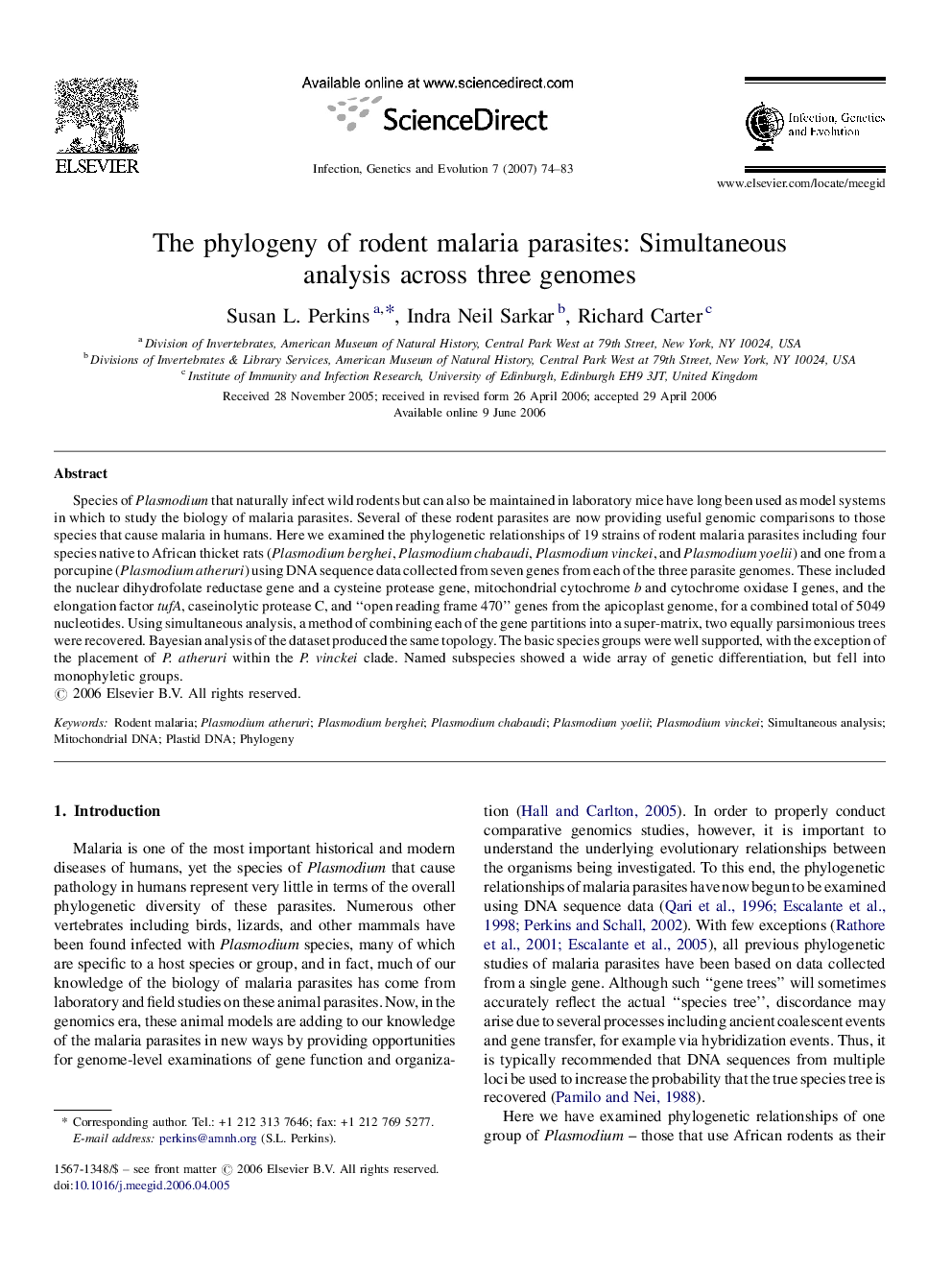| Article ID | Journal | Published Year | Pages | File Type |
|---|---|---|---|---|
| 2823678 | Infection, Genetics and Evolution | 2007 | 10 Pages |
Species of Plasmodium that naturally infect wild rodents but can also be maintained in laboratory mice have long been used as model systems in which to study the biology of malaria parasites. Several of these rodent parasites are now providing useful genomic comparisons to those species that cause malaria in humans. Here we examined the phylogenetic relationships of 19 strains of rodent malaria parasites including four species native to African thicket rats (Plasmodium berghei, Plasmodium chabaudi, Plasmodium vinckei, and Plasmodium yoelii) and one from a porcupine (Plasmodium atheruri) using DNA sequence data collected from seven genes from each of the three parasite genomes. These included the nuclear dihydrofolate reductase gene and a cysteine protease gene, mitochondrial cytochrome b and cytochrome oxidase I genes, and the elongation factor tufA, caseinolytic protease C, and “open reading frame 470” genes from the apicoplast genome, for a combined total of 5049 nucleotides. Using simultaneous analysis, a method of combining each of the gene partitions into a super-matrix, two equally parsimonious trees were recovered. Bayesian analysis of the dataset produced the same topology. The basic species groups were well supported, with the exception of the placement of P. atheruri within the P. vinckei clade. Named subspecies showed a wide array of genetic differentiation, but fell into monophyletic groups.
